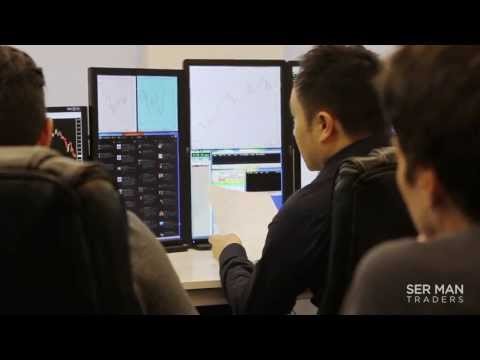The Multiple Lives Of A Stock Trader_1
Post on: 17 Июнь, 2016 No Comment

Whether they are working full- or part-time, traders are likely to experience multiple swings in their careers. Just like the markets they trade, they too will experience uptrends and downtrends in personal profits, and even the odd crash or windfall. But, over the long run, it is the trader who stays vigilant — who knows when to trade actively and when to sit on his hands — who stays in the game over the long run.
The phases a trader cycles through have different characteristics. By understanding the qualities of the market, the systems you are trading and how these might affect your personal profits, you can better adjust and hopefully minimize the effect of declining profits or losses. Psychologically, it can also help to know that almost all traders go through similar experiences, both good and bad. (If volatility and emotion are removed, passive, long-term investing comes out on top. Read Buy-And-Hold Investing Vs. Market Timing .)
The Trader Downtrend
This is very likely where most traders begin their careers. They have capital, they usually have some sort of game plan and they begin trading with full expectations of becoming wealthy from the financial markets. But alas, even though there may be a few early wins, capital often starts to deteriorate. The capital may even completely evaporate. Hopefully, many lessons are learned during this time and it can be viewed as a paid education. A trader can pay the market to learn — unfortunately, many fail to realize what the market is showing them. Instead, they get angry that the market is not going where they think it should go, or they berate themselves so much that they become crippled in making proper market analysis. (Trends are what allow traders and investors to capture profits. Find out what’s behind them. Read 4 Factors That Shape Market Trends .)
Experienced traders likely went through this early education as well. Even as experienced traders, they will face times where losses seem to mount or profits are extremely hard to come by. During these times, it is the experienced trader’s, well, experience, that allows him or her to stay alive in the financial markets. Some do fall, however, and their former profits are distributed back to the markets. Understanding why this phenomenon occurs can help new and experienced traders avoid being wiped out, or as in the case of many, being wiped out again.
When profits are dwindling or losses are mounting, here are a few questions to ask:
- Is my trading plan complete? Does it account for all types of markets (uptrend, downtrend and flat )?
- A plan should account for all types of markets, even if that means the plan states not trading during certain times or conditions. (Do you even have a plan? Read Having A Plan: The Basis Of Success or Tailoring Your Investment Plan .)
Is my trading plan feasible based on current market conditions?
Are my position sizes exposing my capital to undue risk?
Have I been averaging down?
- Have I been following my trading plan?

- Everything mentioned above should already be covered in the trading plan. If it is, then all you need to do is follow your plan. Remember why the rules were chosen in the first place, renew your commitment to them and take some time to re-analyze your plan and implement it.
The Trader Uptrend
Hopefully, most trader will get to experience an uptrend in their trading lives; it is the part where profits materialize and increase. In really good times, winning trades seem to come no matter what and the trader feels invincible. These are great times and should be enjoyed while they last. However, while it is easy to get caught up in the emotion of a winning streak, the trader must realize it will end. To maintain your edge, there are a few things to keep in mind and question while this good streak is going. (Take a look at how the market signals impending economic cycles and sector performance during each stage. See Sector Rotation: The Essentials .)
- Why is my plan working so well right now? Can I adapt it to work better in other market conditions?
- It is possible the strategies employed meld well with the current financial climate, but is it possible these strategies could be adapted to other market environments to improve performance during those times as well?
While good times should be taken advantage of, would an adverse market move wipe out a disproportionate amount of profits?
- Are stops and trailing stop orders being used?
- Just because many trades have worked out recently does not mean you should abandon using stops. Always make sure risk is defined before each trade. Trailing stop orders will be beneficial to you if you have large, unrealized profits. By using a trailing stop, you will be able to realize at least some of the unrealized profits should the market turn.
Trade Actively or Sit on Your Hands
Many great traders have said that knowing when not to trade is what separates the winning traders from the losers. During a bull market, anyone can buy stocks and win, but it is the pro who knows when to back off and avoid losing those profits. This takes experience and, as we have learned, even the experienced traders get caught up, make mistakes and go through phases where they experience diminished profits or rising losses.














